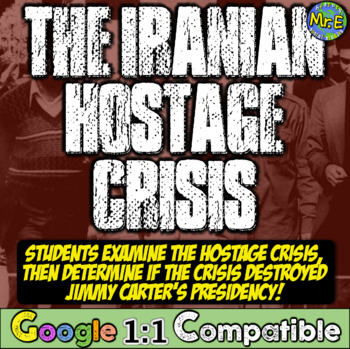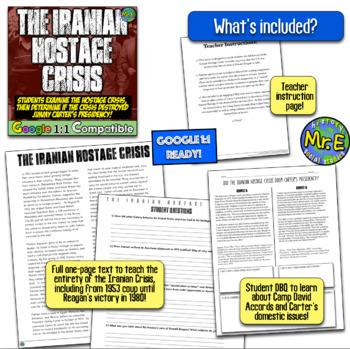Iranian Hostage Crisis & Jimmy Carter: Students examine Crisis & Carter's Legacy
- Zip
What educators are saying
Description
In this two-part resource on the Iranian Hostage Crisis and Jimmy Carter's presidency, students thoroughly examine the Iranian Hostage Crisis in its entirety before determining if the crisis destroyed Jimmy Carter's presidency. Students read the 1-page text and answer the included student analysis and discussion questions (that make for an outstanding class debate) to understand the origins of the Iranian Hostage Crisis, including the 1953 overthrow in Iran (led by the United States), the role of Mohammed Reza Pahlavi, Muhammad Mossadeq, Ruhollah Khomeini (Ayatollah Khomeini), Pahlavi's exile in neighboring countries and his cancer treatments in the United States, the release of women and African-American hostages in the American embassy in Tehran, the disaster of Operation Eagle Claw, and the landslide win of Ronald Reagan in 1980.
** This resource is included in my Modern America Unit located here!
After learning about the Hostage Crisis, students complete a Mini-DBQ activity where they evaluate if Carter's presidency was doomed by the Crisis. Here, students learn about the Camp David Accords (with Anwar Sadat and Menachem Begin) as well as the challenges of inflation and rising interest rates at home.
A teacher key and a full Google 1:1 version are included!





